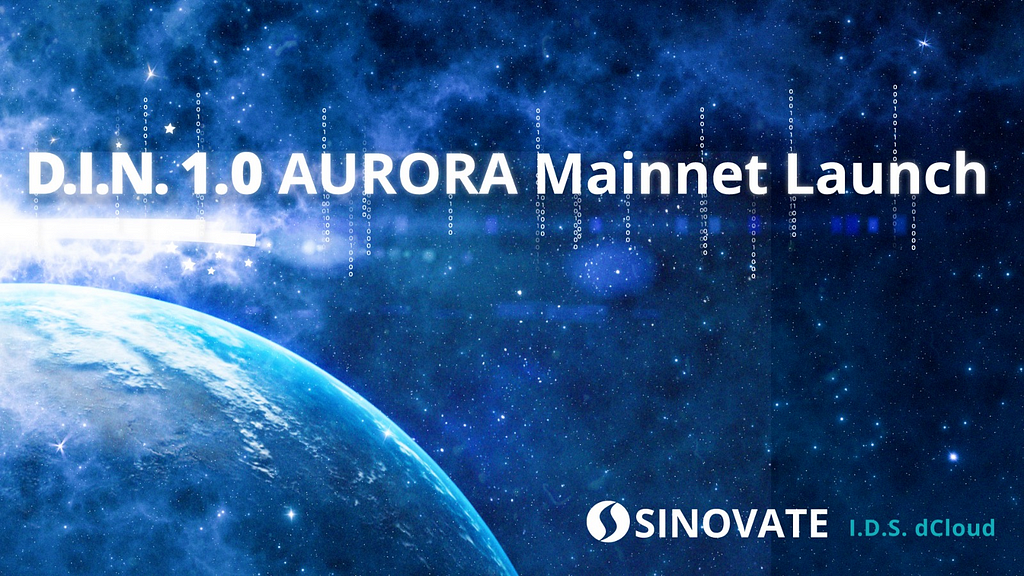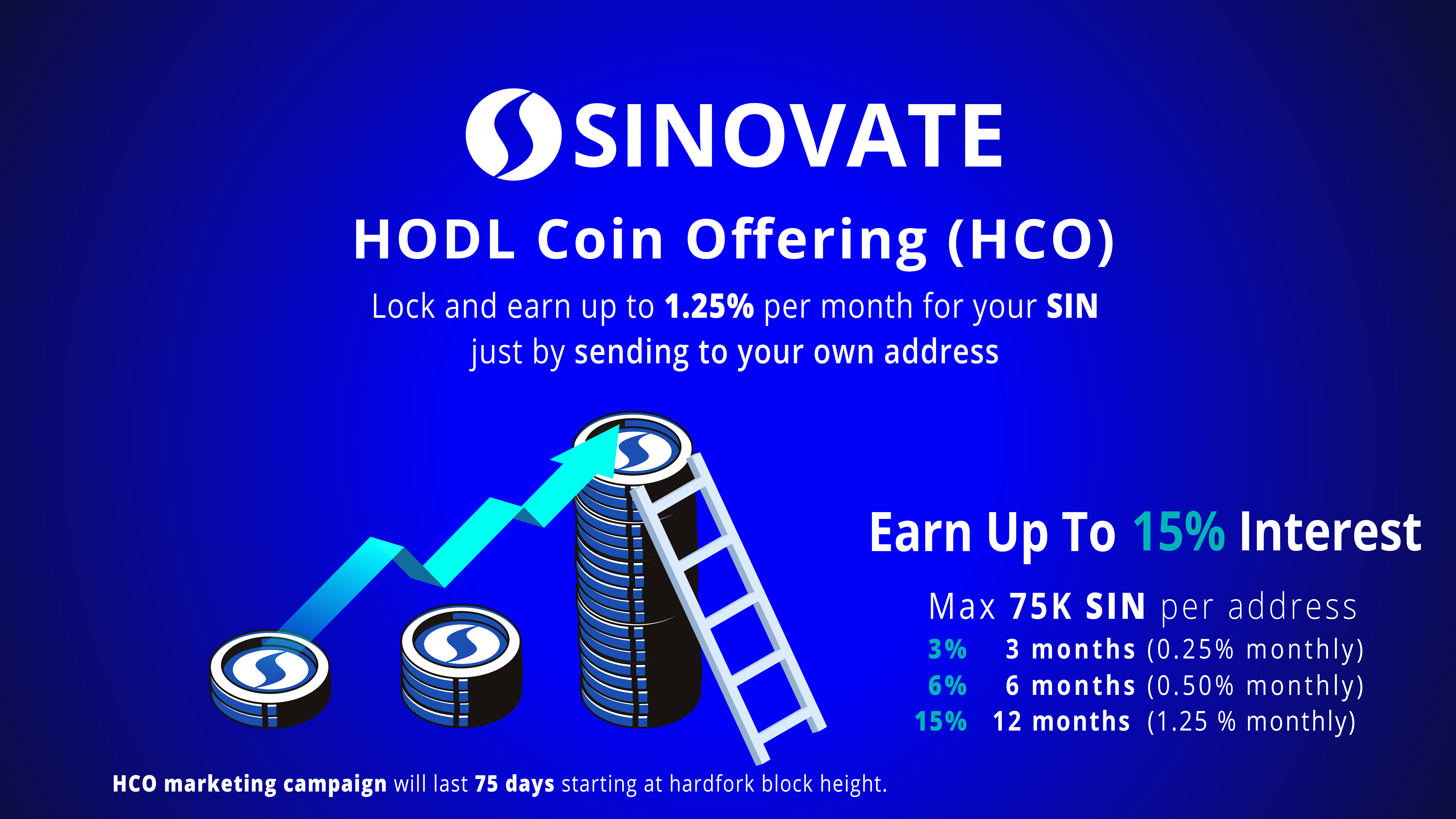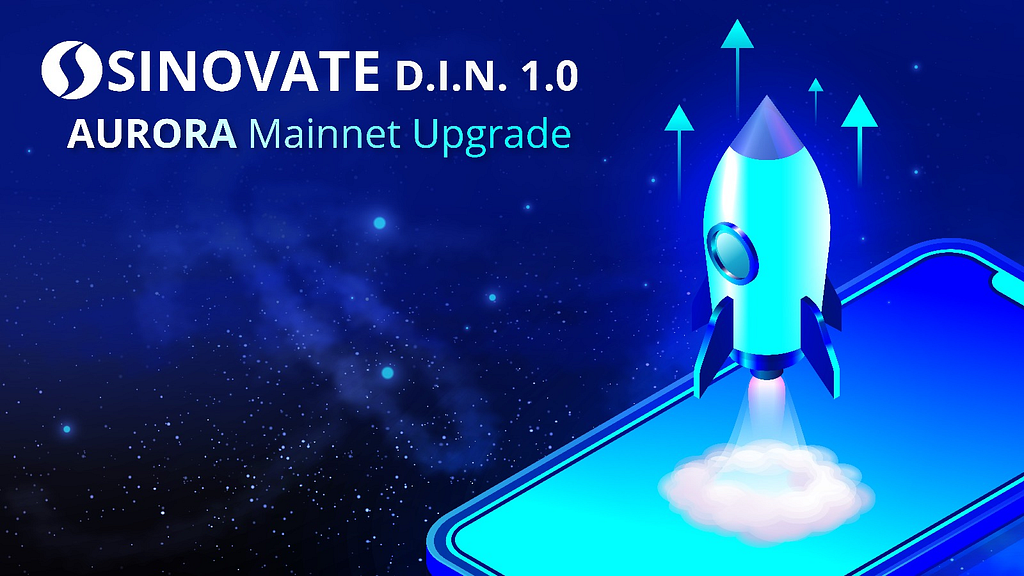SINOVATE AURORA Mainnet Launch at block 550,000

Greetings SINOVATORS!
SINOVATE (SIN) is delighted to confirm that the AURORA mainnet upgrade will go-live at block height 550,000 (taking place around 21 November 2020). Node owners must update to the AURORA Mainnet Wallet to ensure infinity nodes are compatible with the brand new Deterministic Infinity Nodes (DIN) codebase prior to the upgrade. If you have been following project developments, there is no doubt that you’ve heard the team talking about DIN and the upcoming hardfork. This article explains the basics of what a hardfork entails, what SINOVATE is delivering, and a rough timeline.
HardForks — What Are They?
Experienced Cryptocurrency experts — feel free to skip this section.
According to Investopedia.com, a hardfork is defined as follows:
As it relates to blockchain technology, a hardfork (or hard fork) is a radical change to a network’s protocol that makes previously invalid blocks and transactions valid, or vice-versa. A hard fork requires all nodes or users to upgrade to the latest version of the protocol software.
In other words, a hardfork is a complete change of the network that requires all users to participate by manually migrating to the new chain.
Hard forks are typically required whenever a project makes a significant change to the underlying blockchain code. This could come in the form of an added feature, rule, or algorithm. While wallet updates essentially only change the interface through which users interact with the blockchain — hardforks are changes to the chain itself. During a hard fork, a permanent divergence from the previous chain occurs.
There is also such a thing as a soft fork — a fork in which the old and new versions remain compatible. The difference between “hard” and “soft” forks is that hardforks are not compatible with previous versions.
Any blockchain can be forked, and in the ten years of the cryptocurrency industries’ existence, this has happened thousands of times. In fact, most blockchains are a fork of another, sometimes (but not always) adding some features to innovate on top of previous work.
Why is a SIN hardfork required?
SINOVATE will be performing a hardfork on the SIN blockchain at block height 550,000 that will activate an entirely new codebase called Deterministic Infinity Nodes 1.0 AURORA Mainnet. The original SIN code contained borrowed material from the DASH legacy codebase, but with this newest release, the entire SINOVATE repository will be 100% unique and developed in-house by SINOVATE’s team of talented core developers. The new infinity node infrastructure will enable decentralized data storage — a unique approach of securely and privately storing data on on-chain via infinity nodes. SINOVATE’s upcoming Incorruptible Data Storage (IDS) dCloud protocol will rival existing cloud services and provide a cost-competitive alternative, with the profits going to SIN infinity node holders. Initially, this will only support a small bandwidth of storage; we plan to scale and fill up the network with more infinity nodes to support corporate data demands exponentially.
The AURORA mainnet upgrade is only possible by performing a hardfork. All SIN infinity nodes must migrate to the new network in order to continue receiving rewards. Some of the unique network benefits include reduced CPU demands for running a node, on-chain rapid communication and blockchain synchronization, new wallet design, and provably fair reward distribution to node owners. Additionally, the process of setting up a node will be much simpler through the in-wallet 1-click setUP. The SIN blockchain will be much “lighter-weight” on CPU demands thanks to Schnorr signatures. Further details on this will be provided post-upgrade. Due to the DIN code’s nature, the generated new chain will be resilient to chain splits as standard, allowing SINOVATE to build efficient and ultra-reliable dApps (decentralized applications) in the near future.
Reward Changes
Per the community vote, there will be a change to the reward structure for Mini-Tier nodes. Specifically, this will increase rewards from 160 SIN to 560 SIN per block, representing a massive 350% increase! The purpose of this change was to lower network entry barriers and reward smaller node holders, who cannot afford larger investments and incentivize additional network growth. 1000 additional Mini Nodes will be added to the network as a direct result of this change, which will significantly increase the network capabilities for IDS dCloud storage needs. These high rewards will also result in a much faster return on investment.
The community voted in a landslide in the Discord channel, with 97.3% of votes coming in favor of the change.
HODL Coin Offering (HCO)
HODL Coin Offering HCO to earn Passive Income:
– Starting at the hardfork, a 75 days limited marketing campaign earning a passive income by Timelock (HODL) of 15% for 12 months, 6% for 6 months, and 3% for 3 months payable in Annual Percentage Yield (APY) will commence.
– The SINOVATE team will compensate payments and interests from its development funds, so there will be no extra inflation in the supply.
Here are examples:
– If you have 10,000 coins and send your coins to a new address of yours, and the coins remain there for three months (64800 blocks), you will receive 75 SIN.
– If you have 10,000 coins and send your coins to a new address of yours, and the coins remain there for six months (129,600 blocks), you will receive 300 SIN.
– If you have 10,000 coins and send your coins to a new address of yours, and the coins remain there for twelve months (262,800 blocks), you will receive 1,500 SIN.
Rules for HODL Coin Offering:
– The campaign will run for 75 days.
According to your choice, the payments are paid for three months, six months, or twelve months options.
– The upper limit of the Max Wallet amount is up to 75K SIN.
– There is no cancellation of the locked coins.
– Every user must wait for the maturity date of his/her lock period.
– 54,000 blocks (75 days) is the duration of the campaign.
Please follow this guide for step-by-step instructions on the HODL Coin Offering.

Mainnet Scheduled
The Testnet lasted for two weeks, having begun on September 18th and ending on October 2nd. As discussed, the AURORA mainnet will go live on block height 550,000. We are pleased to confirm that no major bugs were reported during the public testnet phase, which is a testament to the fantastic work conducted by our development team to create the most cutting-edge codebase available in the cryptocurrency sphere. Since the Deterministic Infinity Node codebase is the first of its kind, the community and development team needed to take the time to thoroughly test the code in testnet, making sure that all funds in AURORA will remain secure.
All the users, pools, exchanges, infinity node VPS wallets, and desktop wallets must upgrade to the DIN 1.0 AURORA Wallet.
Current working infinity nodes will work as a double-run. Both Infinity nodes and the Deterministic Infinity Nodes will perform at the same time until the hardfork block height but only Infinity Nodes will receive rewards. before switching to DIN.
For new DIN node setup with VPS during or right after the hardfork block height, click here.
For 1-Click easy setUP of DIN during or right after the hardfork block height, click here.
For double-run of current masternodes and DIN at the same time until the hardfork block height, click here.
All wallets must be synchronized from scratch by deleting the .dat files except wallet.dat and infinitynode.conf.
“Nodes that are not upgraded to DIN nodes before the fork will stop receiving rewards starting at block 550,000.”

For more information on SINOVATE AURORA and what’s coming in the future for SINOVATE, check out our website and social media channels.
Website Discord . Telegram . Bitcointalk . Twitter . Facebook .Linkedin. Team.YouTube.Reddit.Instagram.
Author: Jonathan Lees
Recent Comments